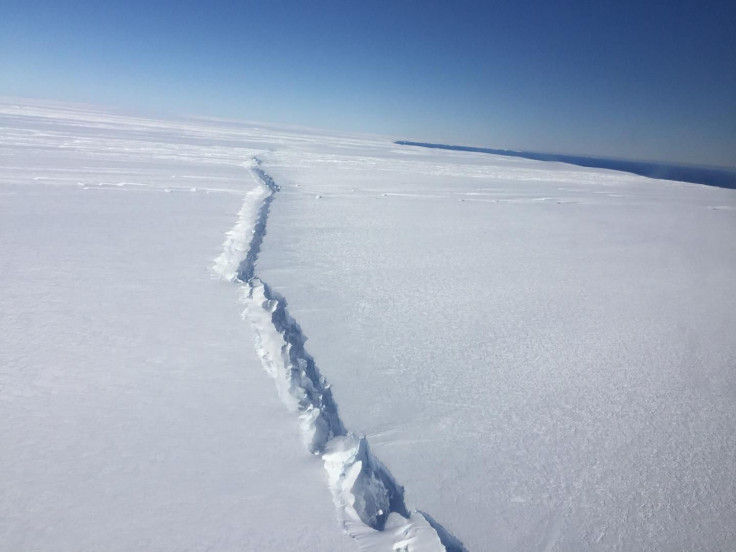Pine Island Glacier In West Antarctica Is Melting From Inside Out

That Antarctica — a region that contains enough ice to raise sea levels across the globe by over 200 feet if it melts completely — is in trouble due to climate change is no longer news. However, exactly when global warming will push this fragile region beyond the point of no return is not entirely clear — although if the raft of studies whose results were published this year are anything to go by, it’s likely to happen sooner than later.
Now, a study accepted for publication in the journal Geophysical Research Letters has unearthed another worrying finding — the Pine Island Glacier, which is already known to be one of the fastest melting glaciers in Antarctica, is breaking apart from inside out.
The study, based on analysis of satellite images of the region, revealed that the rift that led to a 225-square-mile iceberg breaking off from the glacier in mid-2015 originated nearly two years earlier in the centre of the ice shelf.
The rift formed at the very base of the ice shelf nearly 20 miles inland in a region where the ice had thinned compared to the surrounding ice shelf.
“Rifts usually form at the margins of an ice shelf, where the ice is thin and subject to shearing that rips it apart,” lead researcher Ian Howat from Ohio State University, said in a statement released Monday. “However, this latest event in the Pine Island Glacier was due to a rift that originated from the center of the ice shelf and propagated out to the margins. This implies that something weakened the center of the ice shelf, with the most likely explanation being a crevasse melted out at the bedrock level by a warming ocean.”
This is not the first time researchers have seen signs of how precarious the situation in West Antarctica is. Last month, for instance, two new studies conducted by researchers at NASA and the University of California, Irvine, revealed that glaciers in West Antarctica were retreating at an unprecedented rate due to warm water circulating beneath the ice shelf.
The Pine Island Glacier, which is believed to have been thinning for at least 70 years, is particularly vulnerable because it slopes downward inland, leading to the creation of “valleys” that lie below sea level.
“The really troubling thing is that there are many of these valleys further up-glacier. If they are actually sites of weakness that are prone to rifting, we could potentially see more accelerated ice loss in Antarctica,” Howat said. “This kind of rifting behavior provides another mechanism for rapid retreat of these glaciers, adding to the probability that we may see significant collapse of West Antarctica in our lifetimes.”
© Copyright IBTimes 2024. All rights reserved.





















